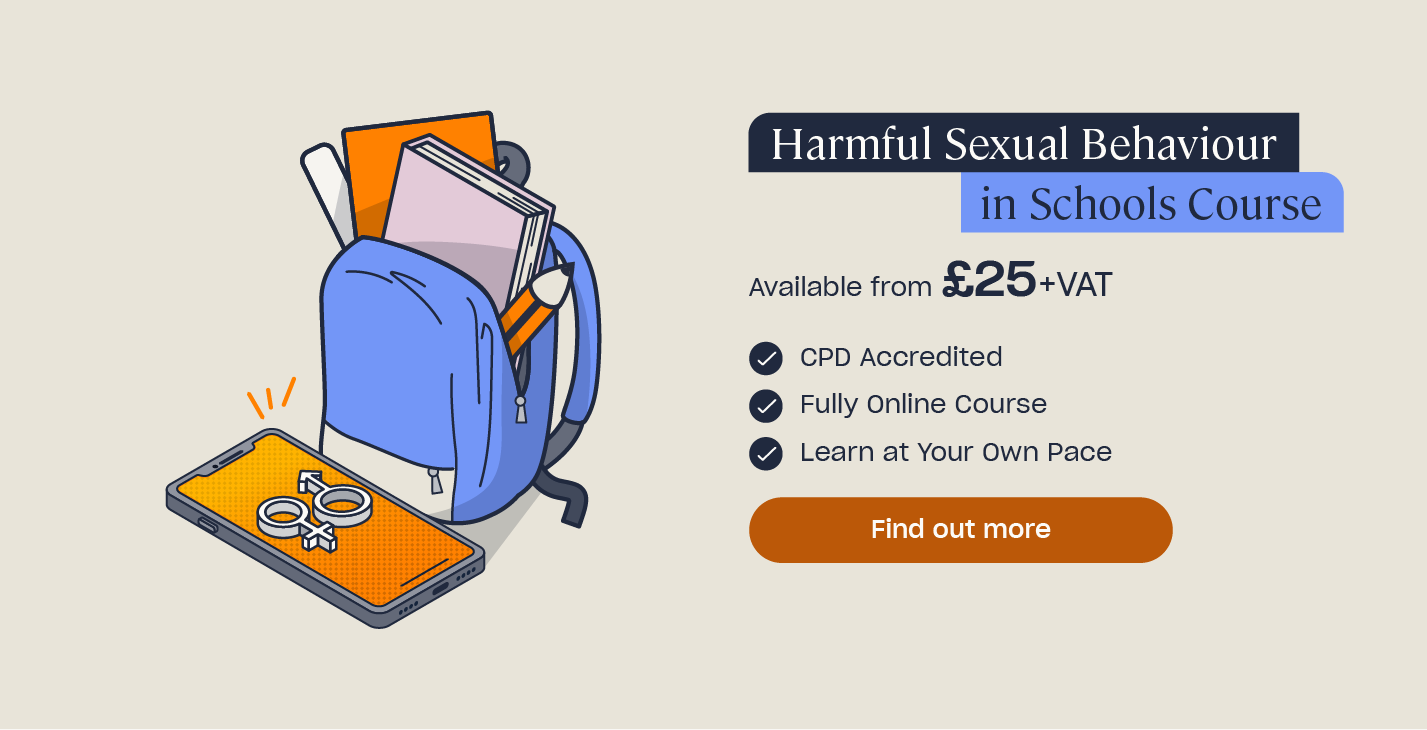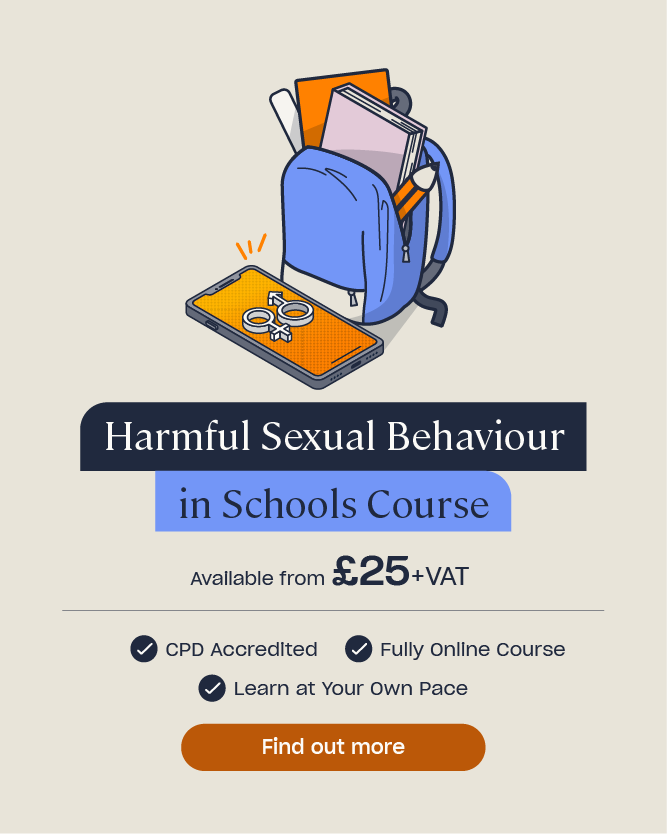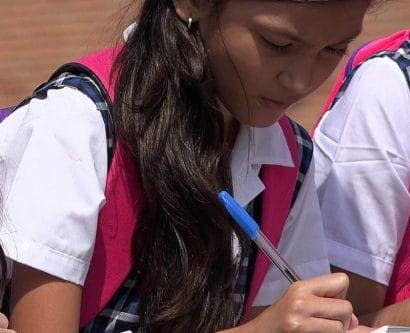How to Respond to Harmful Sexual Behaviour in Schools
The issue of harmful sexual behaviour in schools is widespread – Ofsted’s investigation into sexual harassment and sexual violence, published in June 2021, highlighted that it occurs much more than school staff were aware.
For example, almost 90% of girls and nearly 50% of boys said that being sent explicit pictures or videos that they did not want to see happened to them or their peers a lot or sometimes. The prevalence of harmful sexual behaviour in schools means that a high number of children are having to deal with serious adverse outcomes, which can have lasting effects into adulthood.
As a result, it is vital that all school staff know how to recognise harmful sexual behaviour and respond to incidents appropriately and effectively. In this article, we will define what is meant by harmful sexual behaviour and highlight some examples alongside scenarios which you may come across in schools. There will also be guidance on responding to incidents, and we will include tips and a downloadable PDF to help you meet Ofsted’s requirements in this area.
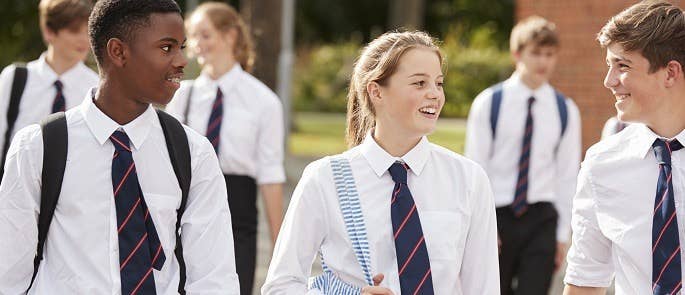
What is Harmful Sexual Behaviour?
The term ‘harmful sexual behaviour’ refers to sexual behaviour which is developmentally inappropriate, abusive, and sometimes violent. Examples of this sort of behaviour include:
- Sexual harassment – unwanted conduct of a sexual nature which makes someone feel intimidated, degraded, or humiliated, such as sexualised gestures and unwanted sexually explicit and/or derogatory, degrading, homophobic, or misogynistic comments (e.g. ‘slut’ or ‘slag’).
- Sexual violence – engaging in (or causing someone to engage in) sexual activity without consent, whether this is physical (such as rape, assault by penetration, and sexual touching without consent) or online (such as the sharing of nude and semi-nude images and/or videos of children, including ‘revenge porn’). Other connected issues include upskirting (taking a picture underneath someone’s clothes without their knowledge) and forcing someone to strip, touch themselves sexually, or engage in sexual activity with a third party.
Key features of harmful sexual behaviour include misuse of power, coercion, violence, and lack of informed or free consent, as well as a significant age gap (generally of more than two years) between children who engage in the behaviour.
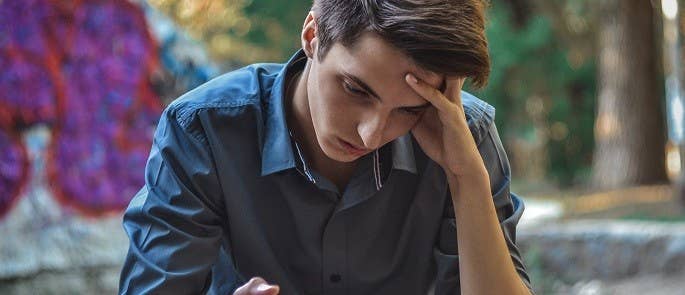
Harmful sexual behaviour is a type of peer-on-peer abuse (abuse of children by other children). It can occur between children of any age.
Causes of Harmful Sexual Behaviour
The causes of sexual harassment and sexual violence in school are often complex and different for each child, but may include:
- Normalisation of the behaviour in society through pornography – which rarely shows or deals with issues of mutual consent and respect – and popular culture (e.g. song lyrics, video games, and TV shows). Adolescents are particularly vulnerable to feeling pressure to ‘fit in’ with what they perceive to be normal.
- Past experience of maltreatment or abuse – according to Hackett et al. (2013), 50% of children displaying harmful sexual behaviour have experienced sexual abuse, and two thirds have experienced another kind of abuse or neglect (Hackett et al., 2016). Children may also have experienced poor sexual boundaries at home, such as family members performing sexual acts with the door open or with the child in the room.
- Alcohol or drug use.
- Intense emotions and a lack of strategies for dealing with them.
- Few or no negative consequences resulting from their behaviour.
- The availability of websites and chat apps that can be used to share sexual imagery easily and instantly, with little thought about the potential consequences.
Harmful sexual behaviour can negatively impact both the child experiencing it and the child displaying it.
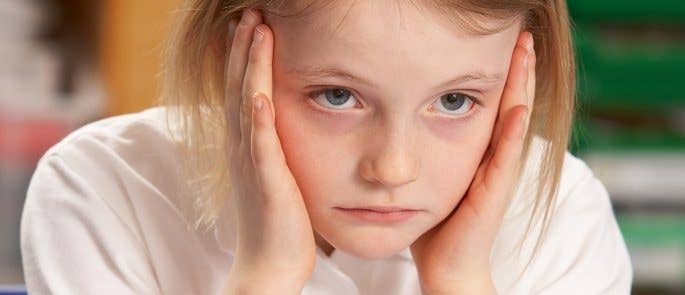
How Should Schools Respond to Harmful Sexual Behaviour Incidents?
Schools have a statutory duty to protect children from incidents of peer-on-peer abuse – including harmful sexual behaviour. The Department for Education states that school staff should act on the assumption that all children and young people are affected by harmful sexual behaviour, due to the prevalence of it.
When responding to an incident of harmful sexual behaviour, you should take into account:
- The nature of the incident, and whether a crime has been committed.
- The context, including the ages and developmental stages of the children involved, their backgrounds, and whether there is any sort of power imbalance.
- Whether the incident is a one-off or part of a sustained pattern of abuse.
- Whether there are links between the incident and other related issues (e.g. child sexual or criminal exploitation).
- Whether there are ongoing risks to the victim, other children, and school or college staff.
- How the child who was affected by the behaviour wants to proceed – you will need to balance respecting their wishes with your responsibilities to protect other children.
- Whether there is any need for disciplinary action (e.g. sanctions or remedial action, such as making an area of the school more safe).
You can broadly split incidents – and your responses – into low-level and high-level.
Low-Level Incidents
When an incident is low-level – such as sexual name-calling or commenting on someone’s body parts in a sexual way – it should be dealt with under your school’s behaviour policy. The policy should set out a range of applicable sanctions, such as litter-picking or detention. As ever, you should review a student’s discipline record before imposing any sanctions, to check that this is the right approach for them. In addition, you should speak to the student and hear what they have to say about the incident, reinforce that it is not acceptable (and explain why), and provide support to the child who was affected by the behaviour.
You may also decide to have a whole-class discussion or assembly about inappropriate behaviour, as a reminder to all children, or take remedial action (such as having a member of staff present in secluded areas of the school). You should generally report incidents to your DSL.
High-Level Incidents
When an incident is high-level – such as sexual assault or rape – it requires immediate intervention and action. This may include calling the police or social care, if a child is in immediate danger or if there is an allegation which includes a criminal offence.
When an incident is high-level – such as sexual assault or rape – it requires immediate intervention and action. This may include calling the police or social care, if a child is in immediate danger or if there is an allegation which includes a criminal offence.
Besides responding to incidents of harmful sexual behaviour, it’s important that schools reduce the likelihood of this behaviour occurring in the first place. Strategies for doing so include creating a safe, healthy school environment, providing positive education on the subject area (including healthy relationships and consent), promoting positive life skills, and having clear expectations, policies, and procedures in place.
Need Training?
It can be difficult to know how to handle incidents of harmful behaviour. Our Harmful Sexual Behaviour in Schools course is designed to give you the skills and knowledge you need. The course categorises different types of harmful sexual behaviour on a continuum, delineating the responses you should take at each stage. It explains the causes and consequences of the behaviour, and sets out how you can reduce the likelihood of it occurring in the first place. Have a look at our course library for more information about this and other courses.
Examples of Harmful Sexual Behaviour: Scenarios in Schools
The scenarios below will help to contextualise what harmful sexual behaviour might look like in a school setting, and how you might respond.
Scenario 1
As you are walking along the corridor to the staff room in your secondary school, you overhear a group of boys calling Priti, a 16-year-old girl, a “slut”. You tell the group that that sort of language is unacceptable and give them a detention, following your school’s behaviour policy. You ensure that Priti is OK and record the incident in your school’s behaviour management system. Since one of the boys has a record of this behaviour, you inform the DSL: he may need an intervention.
Scenario 2
In your Year 9 Geography class, one of the boys – Amir – appears upset. You speak to him after the lesson and he discloses to you that, while they were in the changing rooms after PE, he was seriously sexually assaulted by his peer, Lewis. You immediately refer the incident to the DSL and take Amir to the pastoral team for support. The DSL reports the incident to both social care and the police, so they can carry out an investigation. The DSL also talks to both the children and their parents about the incident. Lewis is given a fixed-term exclusion in line with the behaviour policy.
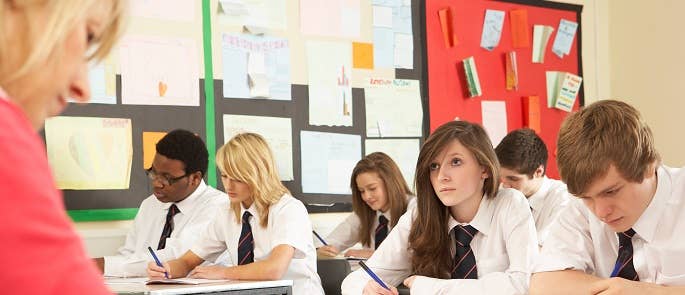
Scenario 3
A 17-year-old girl has been sharing nudes with her 17-year-old boyfriend. However, when she breaks up with him, he sends her nudes to numerous friends as revenge, who then post it online. You find out when the girl discloses the situation to you. You make a report to CEOP to get the image deleted and talk to your DSL, who refers the incident to social care and the police. Both children’s parents are contacted, and the boy is given a fixed-term exclusion. You also decide to move him to other classes when he returns, away from the girl.
Tips for an Ofsted Inspection Focusing on Harmful Sexual Behaviour
The issue of harmful sexual behaviour is very much in the spotlight of national and local news, after the creation of the website Everyone’s Invited and several high-profile incidents in 2021. This means that both parents and Ofsted are very aware of it, and will hold the school accountable.
In relation to this issue, Ofsted will:
- Request that college leaders supply records and analysis of sexual harassment and sexual violence, including online, to inspectors. The Independent Schools Inspectorate will also specifically request schools to provide the same records upon notification of inspection, in addition to its current practice.
- Speak with single-sex groups of pupils, where this helps them to better understand a school or college’s approach to tackling sexual harassment and violence, including online.
- Feed this part of the inspection into a judgement of safeguarding and leadership and management. If a school’s processes are not adequate, Ofsted is likely to judge both their safeguarding practices and leadership and management as inadequate.
Your behaviour and safeguarding/child protection policies will likely be checked to see whether they set out clear and effective procedures to prevent and respond to incidents. It will be expected that you have a zero-tolerance approach to all harmful sexual behaviour.
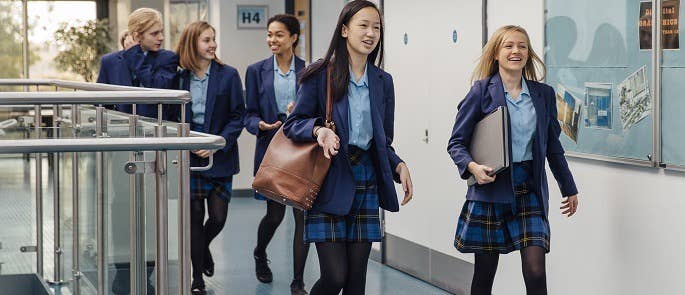
You should be able to show that you provide high-quality education within RSHE/PSHE and Relationships, Health, and Sex Education (where relevant) to reduce the likelihood of incidents occurring.
School staff will need adequate training on the subject in order to be confident and effective in their response. You can download a free PDF below listing the training that all staff members should receive.
Finally, be aware that Ofsted inspectors could use any evidence in connection with the school’s arrangements around harmful sexual behaviour when coming to a judgement about personal development and behaviour. The evidence can be used to decide whether students feel safe and the nature of pastoral support available.
Harmful sexual behaviour – including sexual harassment and sexual violence – is an issue which all school staff need to be aware of. The serious consequences that incidents can have on the children involved make it vital that you know how to respond to the behaviour and reduce the likelihood of it occurring. This is a key safeguarding area, and one which will remain high priority.
Further Resources:
- Harmful Sexual Behaviour in Schools Course
- Safeguarding Courses
- Safeguarding Against Child Exploitation and Abuse: A Resource Pack for Schools
- Child Sexual Abuse: Guidance for Schools
- Understanding the Different Forms of Child Neglect


